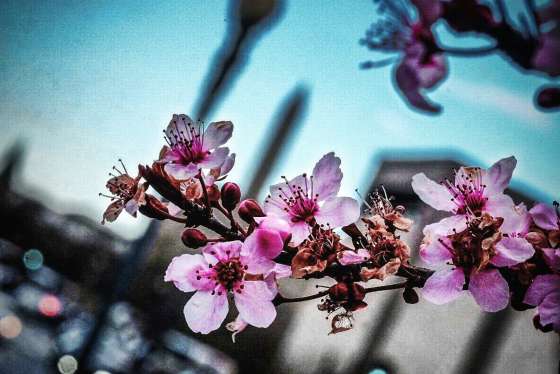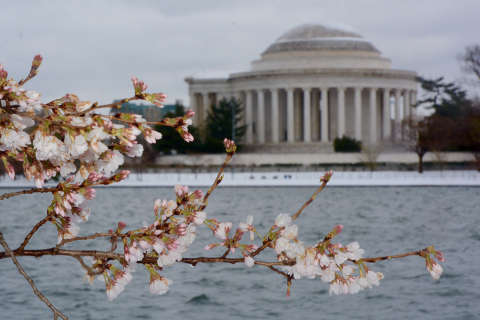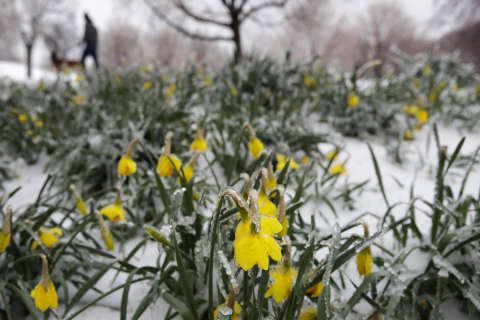WASHINGTON — Below-freezing temperatures that have descended over the D.C. region have damaged the emerging cherry blossoms along the Tidal Basin.
The National Park Service said on Wednesday that horticulturalists found “widespread” damage to blossoms that had reached the fifth stage of bloom, known as the puffy white stage.
Park service staff took cuttings of blooms that hadn’t yet reached that advanced stage to determine what, if any, damage they might have sustained.
The bloom cycle involves six distinct phases. Peak bloom is the sixth and final phase.
So close to peak bloom, which is expected to begin on Sunday, the delicate blossoms are susceptible to damage at 27 degrees. More widespread damage is expected once the mercury drops to 24 degrees, the park service said.
Temperatures remained at or dipped below the 24-degree mark for a sustained period of five hours Wednesday morning, the park service said.
The cold temperatures are expected to linger through Friday before the weather breaks on Saturday.
Park service spokesman Mike Litterst said previously that as many as 90 percent of the blooms could be damaged by such low temperatures.
The park service said that some trees will still reach peak bloom, but the number of blooming trees will be reduced because of the cold. Other varieties of cherry trees that line the basin however bloom later and their buds were protected from the late-bout of winter weather.
Kwanzan trees, the second most prevalent variety along the basin, are expected to reach peak bloom April 10 to 13.
The National Cherry Blossom Festival runs through April 16.







